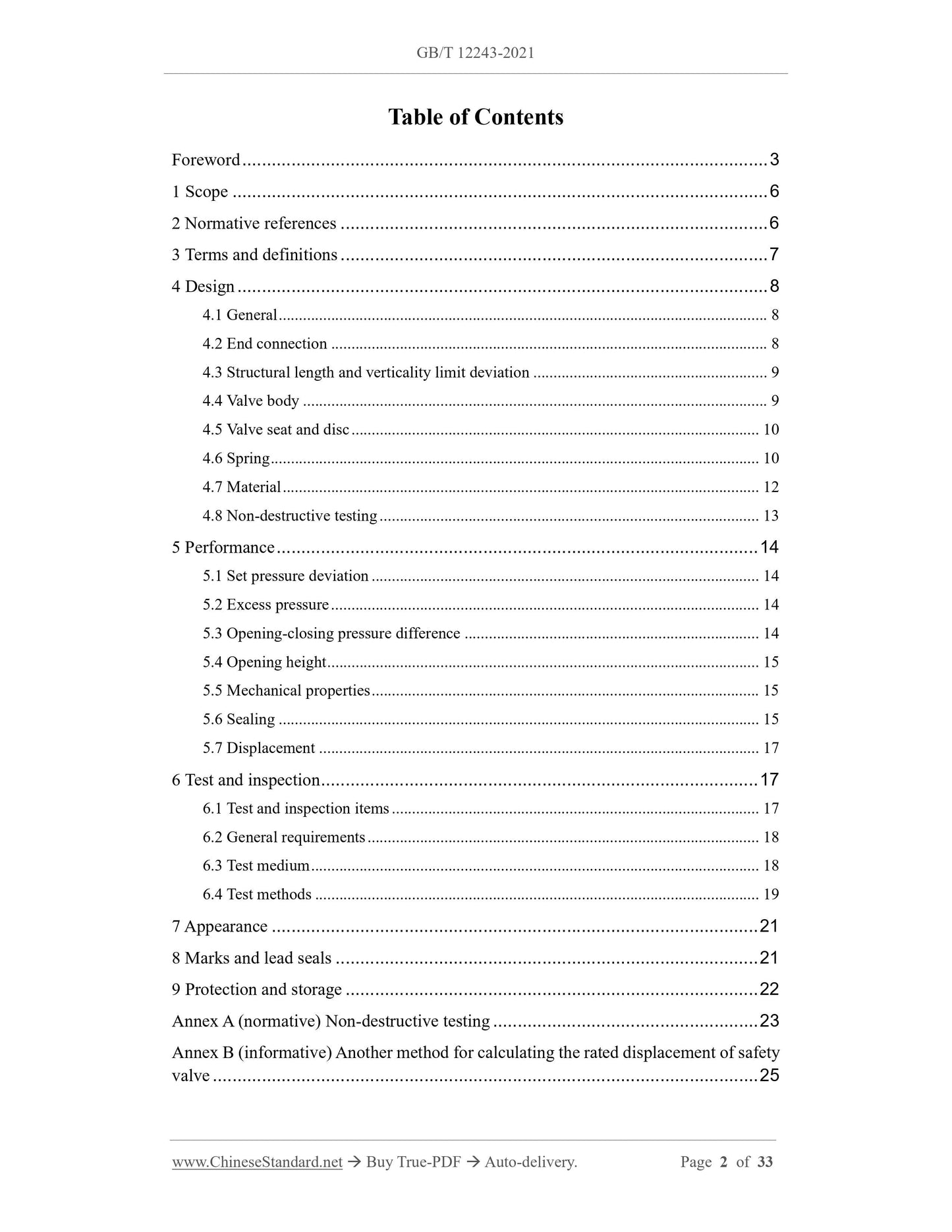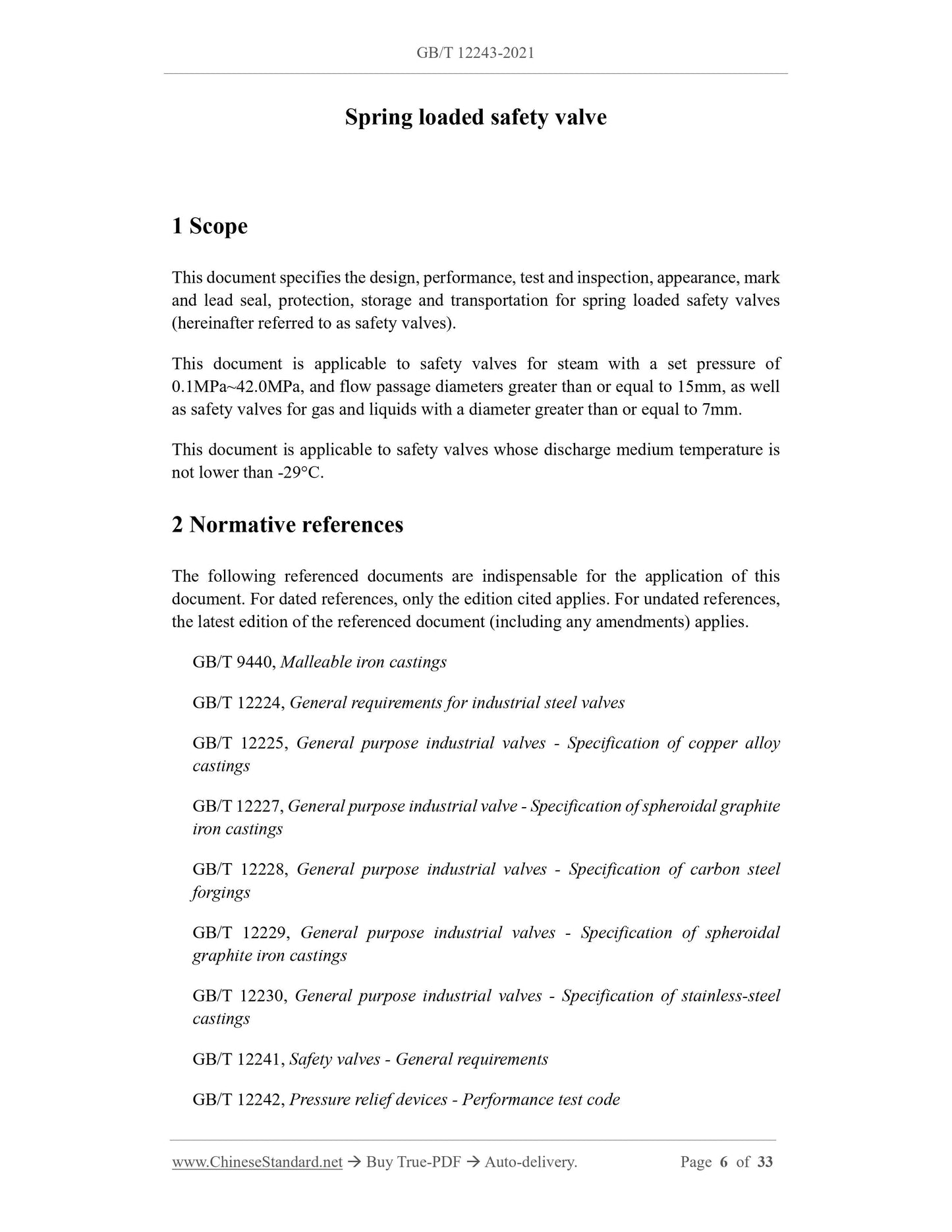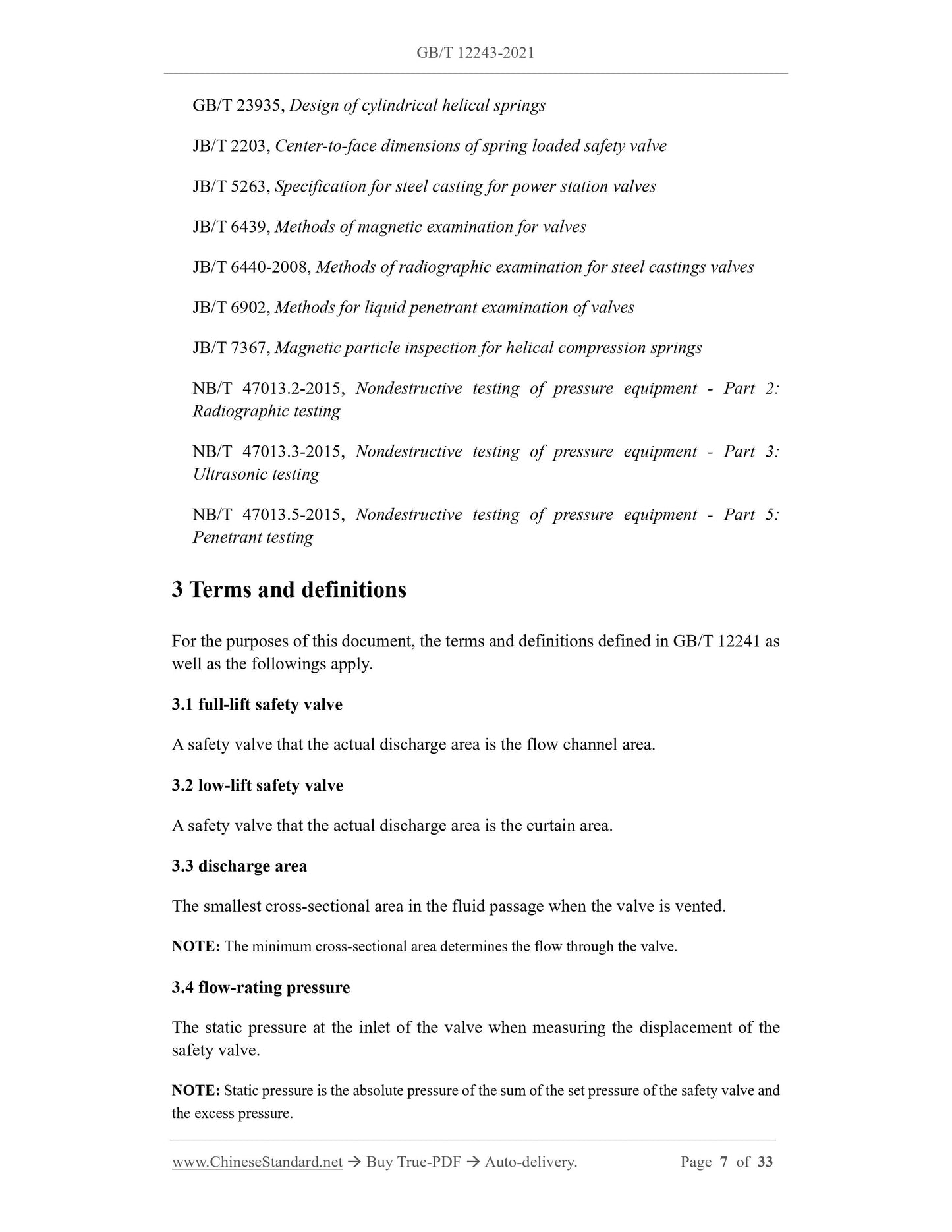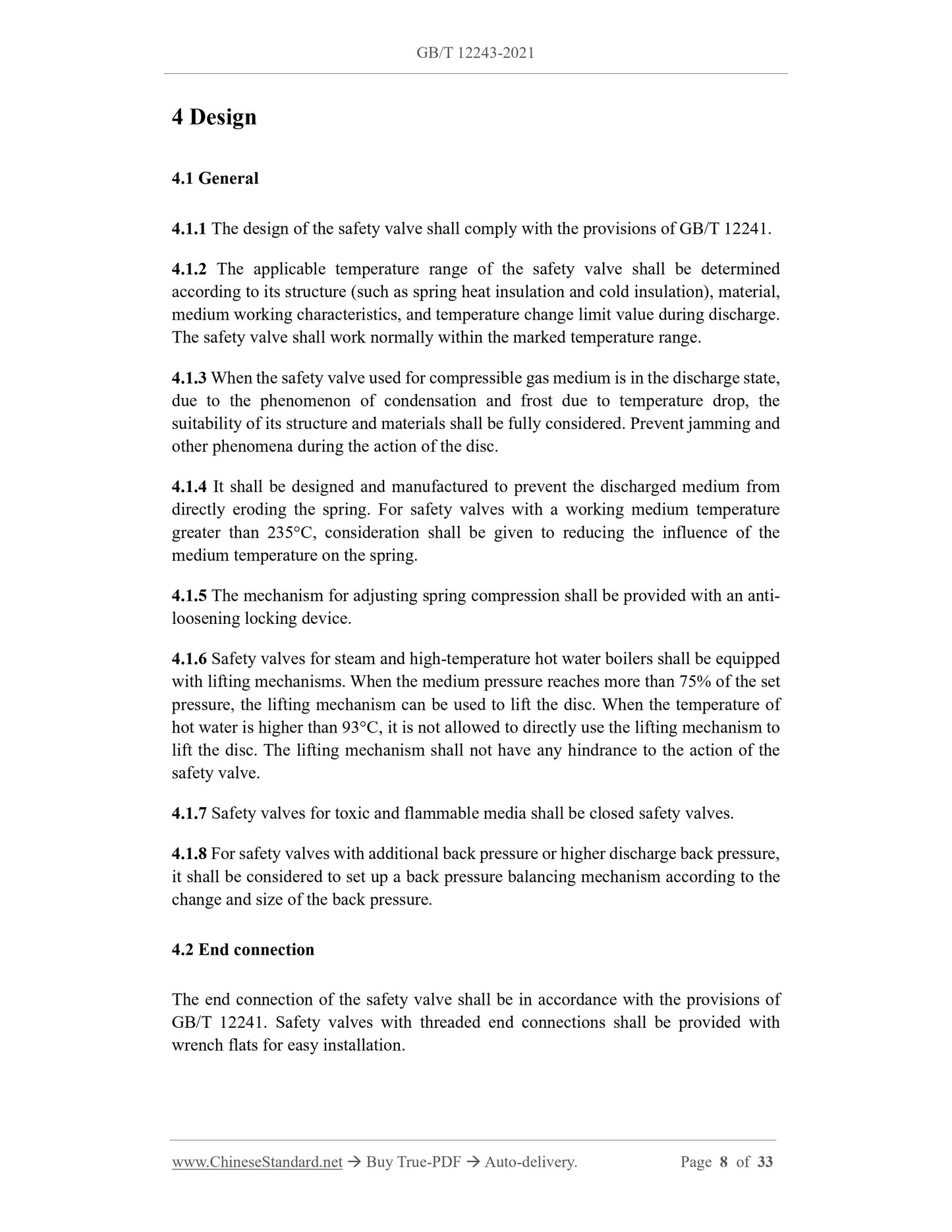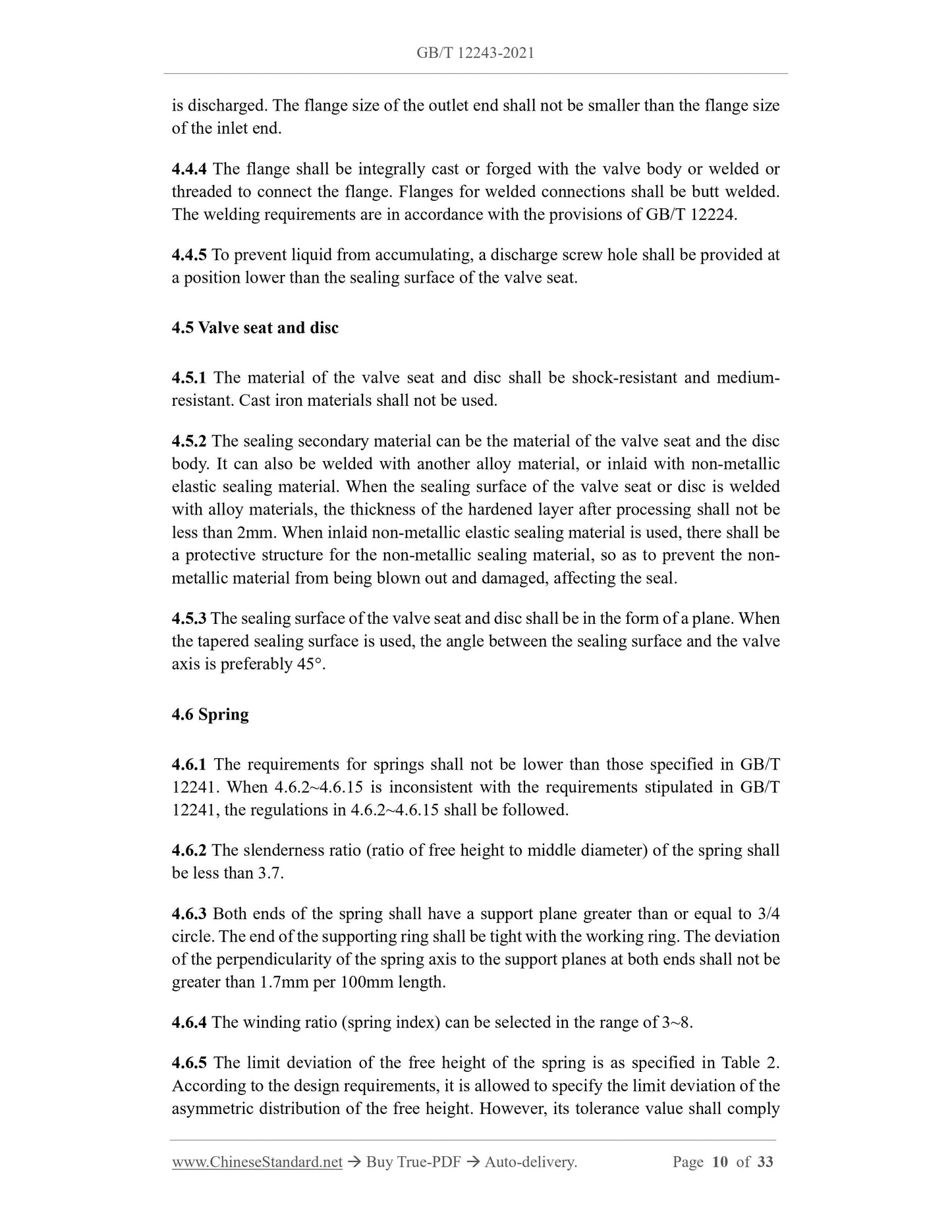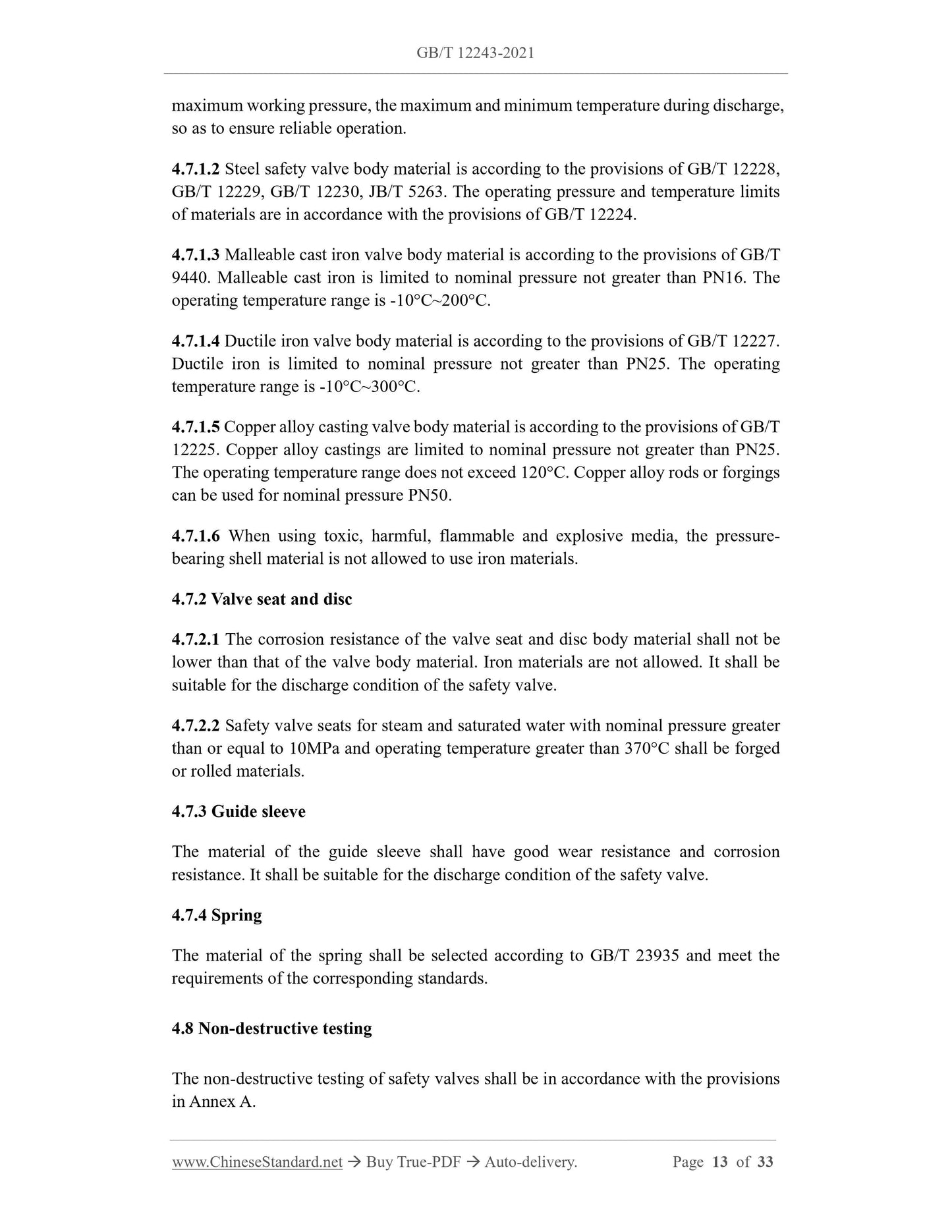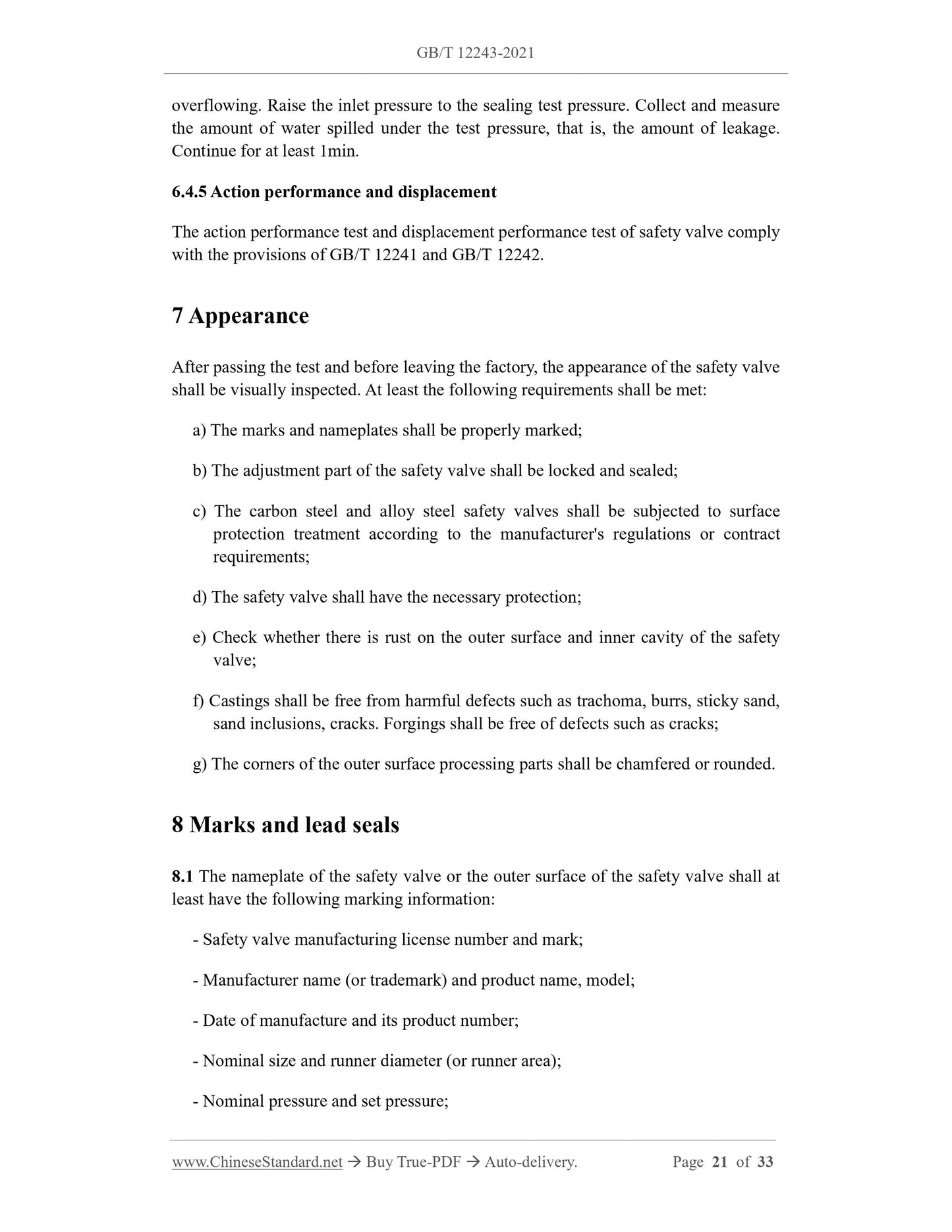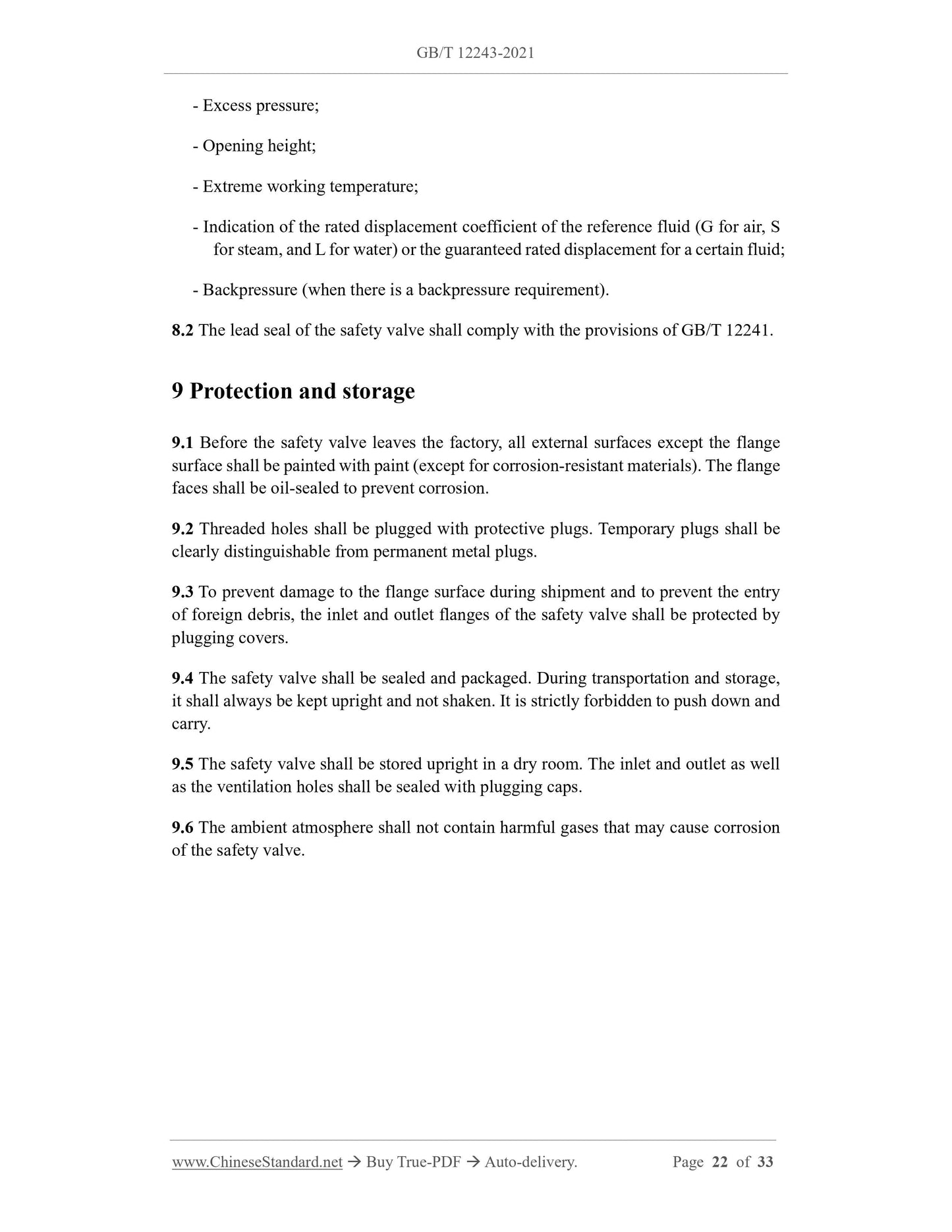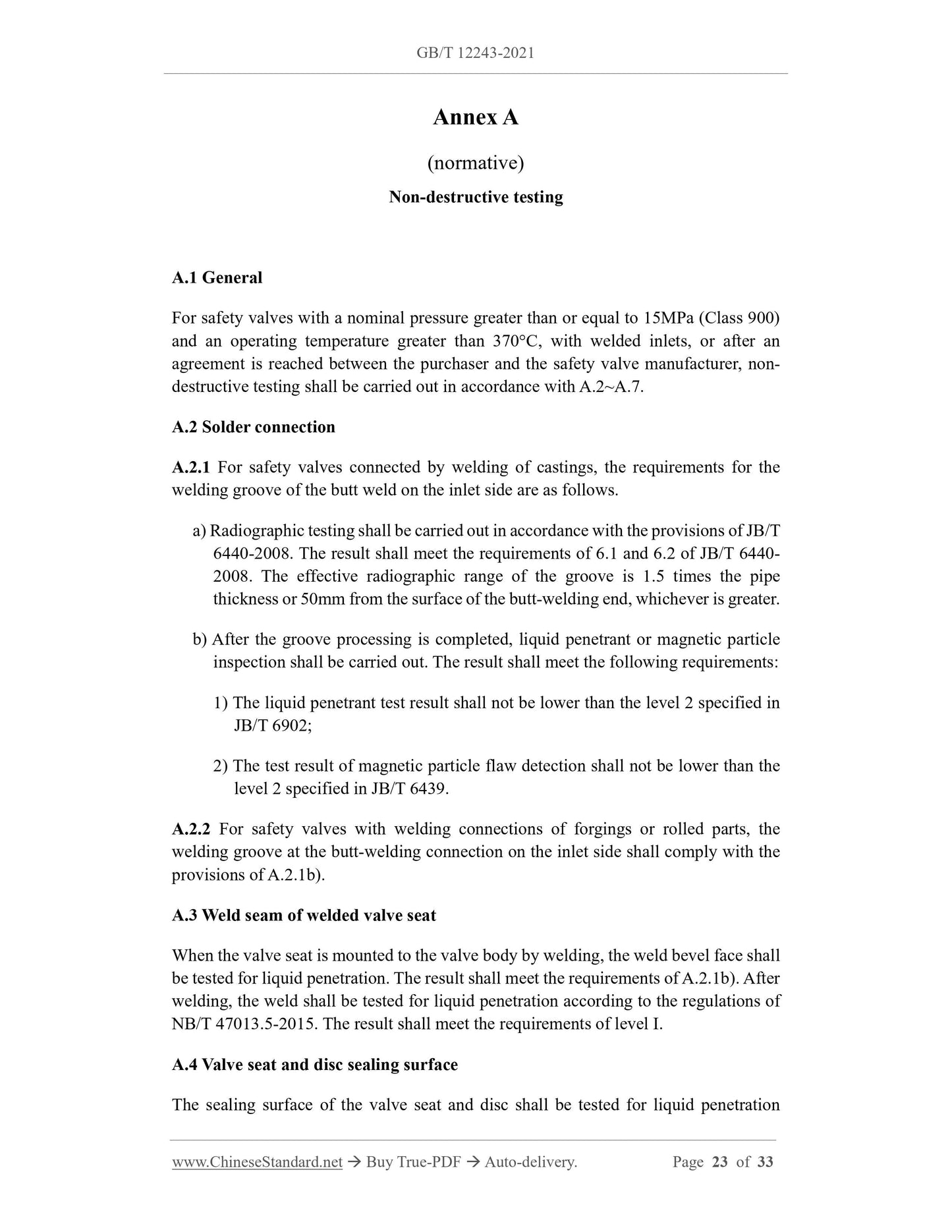1
/
of
10
www.ChineseStandard.us -- Field Test Asia Pte. Ltd.
GB/T 12243-2021 English PDF (GB/T12243-2021)
GB/T 12243-2021 English PDF (GB/T12243-2021)
Regular price
$365.00
Regular price
Sale price
$365.00
Unit price
/
per
Shipping calculated at checkout.
Couldn't load pickup availability
GB/T 12243-2021: Spring loaded safety valves
Delivery: 9 seconds. Download (and Email) true-PDF + Invoice.Get Quotation: Click GB/T 12243-2021 (Self-service in 1-minute)
Newer / historical versions: GB/T 12243-2021
Preview True-PDF
Scope
This document specifies the design, performance, test and inspection, appearance, markand lead seal, protection, storage and transportation for spring loaded safety valves
(hereinafter referred to as safety valves).
This document is applicable to safety valves for steam with a set pressure of
0.1MPa~42.0MPa, and flow passage diameters greater than or equal to 15mm, as well
as safety valves for gas and liquids with a diameter greater than or equal to 7mm.
This document is applicable to safety valves whose discharge medium temperature is
not lower than -29°C.
Basic Data
| Standard ID | GB/T 12243-2021 (GB/T12243-2021) |
| Description (Translated English) | Spring loaded safety valves |
| Sector / Industry | National Standard (Recommended) |
| Classification of Chinese Standard | J16 |
| Word Count Estimation | 25,225 |
| Issuing agency(ies) | State Administration for Market Regulation, China National Standardization Administration |
Share

